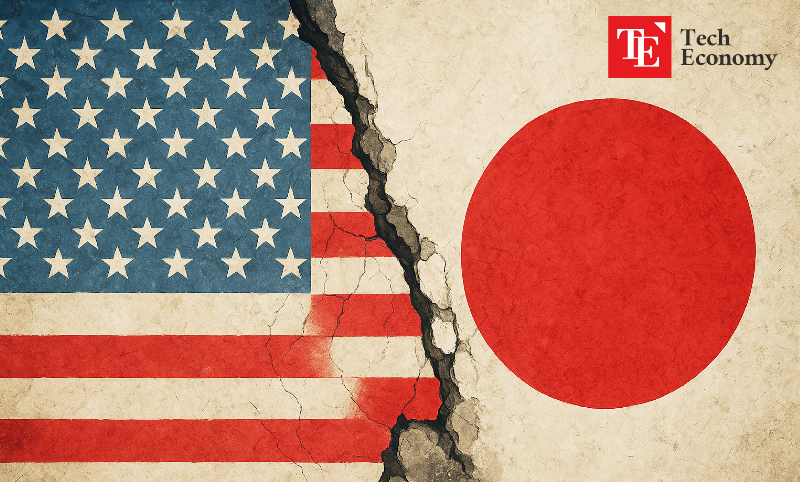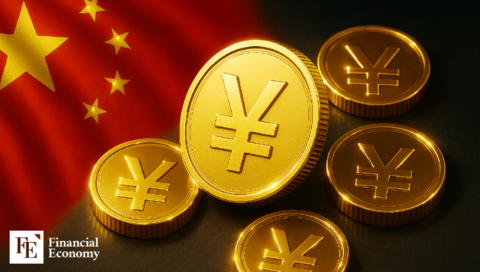U.S.-China Trade Truce Reached, but 'Auto Tariffs' Remain a Stumbling Block; Japanese Auto Industry Enters 'Survival Mode'
Input
Changed
Stock Prices Plunge Amid Nightmare of U.S. Tariffs Significant Profit Decline Expected This Year Efforts to Minimize Impact Through Expanded Local Production

While the U.S. recently struck a truce with China to ease trade tensions, Japan finds itself in a markedly different situation. American tariffs on automobiles—unchanged despite other concessions—are hitting Japanese automakers hard. As their pleas for exemption go unanswered, companies are entering “survival mode,” confronting steep losses, weakened investor confidence, and the urgent need to restructure. The disparity in treatment between Japan and its global peers underscores deepening economic friction and the complex politics of trade under the Trump administration.
Mounting Tariff Pressure Pushes Japanese Automakers to the Brink
Japan’s automobile sector—long a linchpin of its export economy—is under siege. Unlike Chinese and British vehicles, which recently benefited from lowered U.S. tariffs, Japanese exports continue to face the possibility of a punishing 25% duty under rules tied to the United States-Mexico-Canada Agreement (USMCA). Compounding the problem is the strength of the yen, which erodes the price competitiveness of Japanese goods abroad.
President Trump’s continued criticism of Japan’s auto trade surplus with the U.S. only deepens the uncertainty. He argues that American vehicles fail to gain traction in Japan, while Japanese brands dominate U.S. roads—a sentiment that has found political resonance. This climate leaves Japanese companies with little room to maneuver.
Despite Japan’s calls for equal treatment, Washington remains unmoved. Tokyo's request to exclude Japanese cars from the tariff list—particularly given its alliance with the U.S.—has been met with silence. As one Japanese official pointed out, the issue isn’t just economic—it’s symbolic of a deteriorating trust between allies over fair trade treatment.
Declining Profits and Mass Layoffs Signal Industry Crisis
The economic toll is becoming clearer by the day. Auto stocks across Japan are in decline, with manufacturers now trading well below their book value. According to data from QUICK, Toyota is valued at just 0.96 times its book value, while Nissan and Mazda are at historic lows of 0.25 and 0.3, respectively.
The downward trend follows Trump’s re-election, which the markets interpret as a sign that aggressive tariff policies will persist. Mazda's stock dropped 19%, Nissan's fell 11%, and Mitsubishi's declined 7%. Even giants like Toyota and Honda weren’t spared, with losses of 2% and 1%, respectively.
Financial forecasts reflect this grim reality. Toyota has slashed its operating profit outlook for fiscal year 2025 by 20.8%, down to $26.16 billion. It attributes a $1.238 billion loss in just April and May to U.S. tariff exposure. Honda is even more pessimistic, projecting a 70% decline in net profit to $1.72 billion.
The workforce is also bearing the brunt. Nissan has unveiled a sweeping restructuring plan that includes 20,000 job cuts, adding to 9,000 announced last year. The company also aims to reduce its global manufacturing footprint by cutting its number of plants from 17 to 10 by 2027.

Reimport Strategy Signals Desperation—and Tactical Creativity
Amid the deadlock, Japan is turning to unconventional tactics. The government is considering reimporting Japanese-brand vehicles manufactured in U.S. plants. These would be sold domestically—not because they meet consumer demand better, but as a symbolic gesture aimed at reducing the U.S. trade deficit. The logic is political: if American cars don’t sell in Japan, perhaps Japanese cars made in America can.
This isn't without precedent. During the trade tensions of the 1990s, Japan used a similar approach. Some reimported U.S.-made models found moderate success in the domestic market. Today, officials hope history might repeat itself—at least enough to soften American criticism.
Still, the strategy reflects deeper structural challenges. Japanese demand for U.S. car brands like GM, Ford, and Stellantis remains low, and the lack of aggressive marketing from these companies doesn't help. As one official told The Economy, the goal isn’t market transformation but optics and negotiation leverage.
Trade discussions are ongoing, with a third round of bilateral talks on the horizon. Japan is preparing a working-level meeting to propose reforms such as relaxing U.S. safety regulations, expanding agricultural imports, and eliminating non-tariff barriers. If progress is made, Economic Revitalization Minister Ryosei Akazawa is expected to travel to Washington as early as May 22 to meet with Treasury Secretary Scott Bessent and escalate negotiations to the ministerial level.
But with the U.S. maintaining that auto tariffs are “non-negotiable,” Japan’s hopes remain fragile. For now, its automakers are bracing for a long, uncertain road ahead.





















